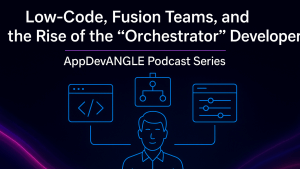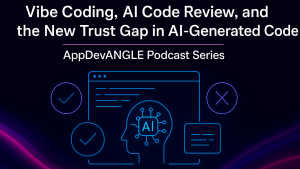ABSTRACT: At the Oracle Database+AI Analyst Summit, Oracle outlined its vision for a unified, multicloud, AI-ready data infrastructure. This analyst brief explores how Oracle is integrating AI directly into its database platforms, unifying support for diverse data types like relational, vector, JSON, and graph, while delivering high-performance, cost-effective solutions across multicloud environments. With an emphasis on real-world ROI, AI personalization by user persona, and a pragmatic approach to AI application development (GenDev), Oracle is positioning its database as the foundation for next-generation enterprise AI.
By Rob Strechay with insights from Stephanie Walter, Analyst-in-Residence, Hyperframe Research
The Current Landscape: Complex Data, Complex Demands
At the heart of today’s enterprise challenges is the fragmentation of data across workloads, clouds, and formats, an issue only magnified by the rapid adoption of AI. Organizations are increasingly recognizing that traditional database architectures were not designed to meet the dynamic needs of modern AI systems. As a result, they’re grappling with data silos, high infrastructure costs, limited performance, and lengthy development cycles. Oracle’s recent Database + AI Analyst Summit brought these tensions into sharp focus, outlining how the company is addressing them by integrating AI natively into its core data infrastructure.
What stood out at this summit is how Oracle is rethinking data management, not just for traditional analytics or transactional workloads, but also for the practical deployment of AI. With the AI wave crashing over every enterprise, Oracle’s unified approach positions it to tackle complexity at the infrastructure layer by co-locating compute, storage, and AI models at the data source, whether in the cloud, on-premises, or across hybrid clouds.
Understanding Personas and Data Modalities: A Modern Data Platform Mandate
A key differentiator is Oracle’s strong focus on the diversity of both users and data types. Oracle’s platform isn’t just supporting structured relational data. It’s expanding to accommodate JSON, graph, vector, and spatial data in a single, converged platform, which is critical for powering generative AI and agent-based workflows.
The nuance we picked up on? How Oracle’s AI roadmap is built around multiple personas. Instead of treating AI as a one-size-fits-all service layer, Oracle aims to tailor its capabilities to meet the needs of domain experts, business users, data scientists, and developers. Each group has distinct accuracy requirements, interface expectations, and privacy or compliance needs. This layered, user-centric approach helps Oracle’s AI become more adaptable and enterprise-ready.
Furthermore, Oracle’s JSON-relational duality views exemplify how the platform meets developers where they are, providing NoSQL-like flexibility without sacrificing SQL-based performance or security. This ability to support a broad range of data access patterns without requiring separate platforms reduces friction and accelerates productivity.
ROI and AI: Bringing Value Back to the Forefront
Amid the hype, Oracle is laser-focused on the business value of AI. The summit made it clear that the company’s strategy is rooted in cost efficiency, performance, and simplification. With Autonomous Database storage offered at around $1 per terabyte per month, Oracle presents a compelling argument for reducing the total cost of ownership, particularly when combined with its integrated toolsets for model management, code generation, and analytics.
But the ROI conversation goes deeper. Oracle is addressing what it calls the “last 20%” problem of AI adoption, the messy operational realities of privacy, integration, and security that often delay enterprise deployment. By embedding AI services directly into its database engine, Oracle allows organizations to operationalize AI at scale without the overhead of stitching together disparate tools.
Tools like AI notebooks, model catalogs, shared Development environments, and support for open-source LLMs demonstrate that Oracle understands what data engineers and data scientists need, not just in infrastructure, but in day-to-day tooling. Meanwhile, features such as fine-grained access control and data lineage tracking ensure that AI projects meet compliance and governance standards from the outset.
The Multicloud Moment: From Optional to Essential
Oracle’s multicloud strategy has evolved beyond simple compatibility to an active partnership and deep integration. With 80% of enterprises now using multiple clouds, Oracle’s expanded support across AWS, Azure, Google Cloud, and other hyperscalers, without egress fees and with complete feature parity to OCI, provides enterprises with critical flexibility.
What’s compelling is Oracle’s infrastructure-as-code alignment with Terraform, CloudFormation, and native APIs, which empowers organizations to deploy AI workloads anywhere their data resides. This meets yet another persona in that of the Platform Engineering team. This design supports a “bring the AI to the data” model, helping to overcome a significant challenge in modern AI architecture: minimizing data movement to reduce latency, risk, and cost.
The vision: AI services from a single cloud (e.g., Amazon Bedrock or OpenAI via Azure) can be utilized seamlessly against data stored in Oracle databases on OCI, AWS, or any partner cloud. This level of interoperability is a key step in eliminating vendor lock-in and accelerating time-to-insight.
What We Couldn’t Talk About… Yet
While Oracle has already delivered a powerful vision and real-world implementations, several forward-looking initiatives were discussed under a non-disclosure agreement (NDA), so we can’t disclose them. For instance, we expect deeper integrations, such as what was achieved with Databricks via Delta Sharing, to suggest a strategic expansion into collaborative ecosystems beyond Oracle’s own. More announcements in this space are expected, particularly as data sharing and AI interconnectivity become mission-critical.
Additionally, while Oracle teased its GenDev methodology, an AI-assisted, modular approach to enterprise app development, it was clear that more details are forthcoming. GenDev acknowledges that AI won’t replace developers but instead augment their workflows in a structured, secure, and modular fashion. This positions Oracle as a realist in a market often overtaken by AI-fueled hype.
Lastly, expect continued investment in sovereign cloud expansion. Oracle’s goal of reaching 170+ regions this year, including in-country deployments with partners like Fujitsu, signals an aggressive push to meet data residency and compliance demands globally.
Our ANGLE
We saw one obvious thing from the Oracle’s Database+AI Analyst Summit: Oracle is not building AI in parallel to its database; it is embedding AI into the very foundation of data infrastructure. This fusion of data types, personas, and cloud strategies shows maturity, vision, and pragmatism.
We see the strategy starting with unifying data types, such as vector, graph, relational, and JSON, within a single environment, to enabling real-time AI deployment in any cloud, Oracle is presenting a coherent, integrated data-AI platform, and it’s not just a concept. Real customers are already live. That execution, not just vision, is what stood out most, as we got to talk to some end-user organizations.
We believe that for organizations looking to simplify complexity, reduce AI implementation friction, and achieve tangible ROI, Oracle’s approach offers a compelling model for what the future of AI-ready infrastructure should look like. This will be especially true for those using Oracle Databases, OCI, and other hyperscale clouds.
Full video:



